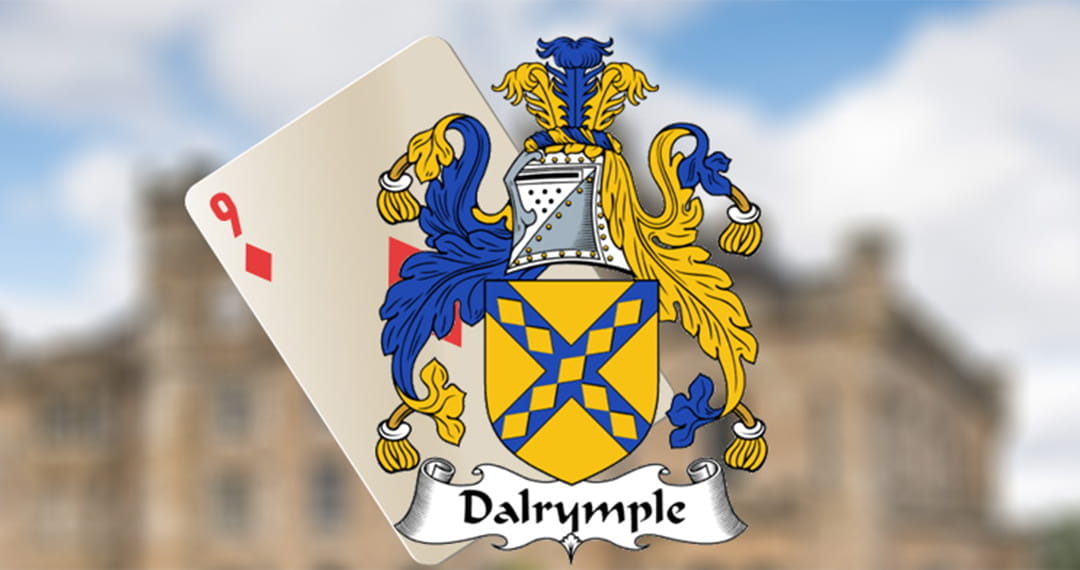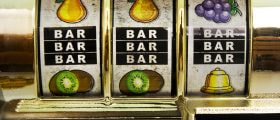The Curse of Scotland – Myths, Legends, and Etymology
June 25, 2020 Tony ChristopherThe story behind the origin of the term The Curse of Scotland is possibly as mysterious as the Loch Ness monster. Well, maybe this comparison is stretched too far out, but at least we know that both are part of the Scottish folklore. Somehow a standard 9 of diamonds playing card found itself in the middle of massacres and bloodshed and earned the gloomy moniker which is still debated to this day. In the following lines, we’re going to delve into the most popular theories of how the gaming card got its fearsome nickname.

9 of Diamonds – Earliest Mention of The Curse of Scotland
How did the 9 of diamonds become associated as The Curse of Scotland? Several historical facts contradict themselves by claiming the glory to themselves. The obvious issue here, however, is the time frame in which they happened. The most popular events from the history of Scotland date from the 17th and 18th centuries. The initial documented mention of the term, however, can be found in the book ‘The British Apollo’ from 1708.
The book is dedicated to the Eighteen century which has been called ‘The Age of Enlightenment’ and it comes in three volumes. According to a passage found in it, every ninth king of Scotland has happened to be a tyrant. In 1726 that same statement would be found in another history journal, which further emphasises the origin of the proverb. It is still being debated, nonetheless, whether this statement is true as historical findings indicate that the scourged kings were not necessarily from the ninth generation.
Curse of Scotland Playing Card – The Battle of Bothwell Bridge and the Glencoe Massacre
Other compelling theories of how the curse of Scotland playing card was nicknamed are connected to two great battles. The first one took place on Bothwell Bridge in 1679 where reputedly the Duke of Monmouth had written his orders for an attack down on a card – 9 of diamonds. The memorials can be found in the book ‘Scotsman’s Library’ by James Mitchell published in 1825. This notion makes sense from a historical point of view, as the battle took place 28 years prior to the first written publication.
Another event that is highly probable of being the origin is the Glencoe Massacre. It is believed that Sir John Dalrymple, 1st Earl of Stair, was the one to authorise the slaughter in the night on February 13th, 1692. As the English crown was questioning the Scottish loyalty at the time, it was determined that a painful lesson should be taught. The sacrificial lamb was chosen to be the MacDonald of Glencoe clan, due to its failure to pledge allegiance to King William III of England.
As an outcome of this brutal act, in 1695 Sir John Dalrymple was forced to resign from his position as a joint secretary. What is interesting about this story is that his coat of arms consists of a blue saltire with nine yellow lozenges placed in a cross-shape. Therefore, it is believed that due to the striking resemblance between Dalrymple’s armorial bearings and the card nine of diamonds alongside the public outcry from the bloodshed, the playing card is associated as the Curse of Scotland.
The Battle of Culloden
The Battle of Culloden is another dark event from the Scottish history linked to the origin of the Curse of Scotland and 9 of diamonds playing card. The Duke of Cumberland, Prince William, was the main reason behind the victory in the battle that took place in 1746. Similarly, to the Battle of Bothwell Bridge and the alleged order by Duke of Monmouth witch we mentioned earlier, it is believed that Prince William has given his order on the back of a card 9 of diamonds.
It is said that the reason behind the Duke’s action is a young officer who demanded a written statement of his command, while William was playing cards. Although there isn’t enough solid evidence to back up this theory, the order of showing no mercy to the surviving enemies and the brutal massacre earned him the nickname Butcher Cumberland. The event took place 38 years after the initial publication in ‘The British Apollo’ and logically disproves the theory. Nevertheless, The Battle of Culloden is among the most popular stories for the origin of the Curse of Scotland.
Pope Joan – A Popular Card Game
Another spread speculation revolves around a card game called Pope Joan which was particularly popular in Scotland around the 18th century. The most powerful card in the game is 9 diamonds also known as the Pope. Due to the hatred against the pope since the 1560’s Reformation in Scotland, some believe that this is the etymology of the term Curse of Scotland. Although this game has lost its popularity nowadays, you can give a try to the best card games at present.
Final Thoughts
All of the theories we’ve mentioned in the article are unquestionably intriguing. Most of them cast a dark shadow over the meaning stained by violence and bloodshed. Others such as the Pope Joan game are slightly less brutal, but still part of true events from the Scottish past. Either way, none of them can be traced as the definite origin of the term Curse of Scotland and its connection to the playing card 9 of diamonds. And so, for now, the mystery remains.



